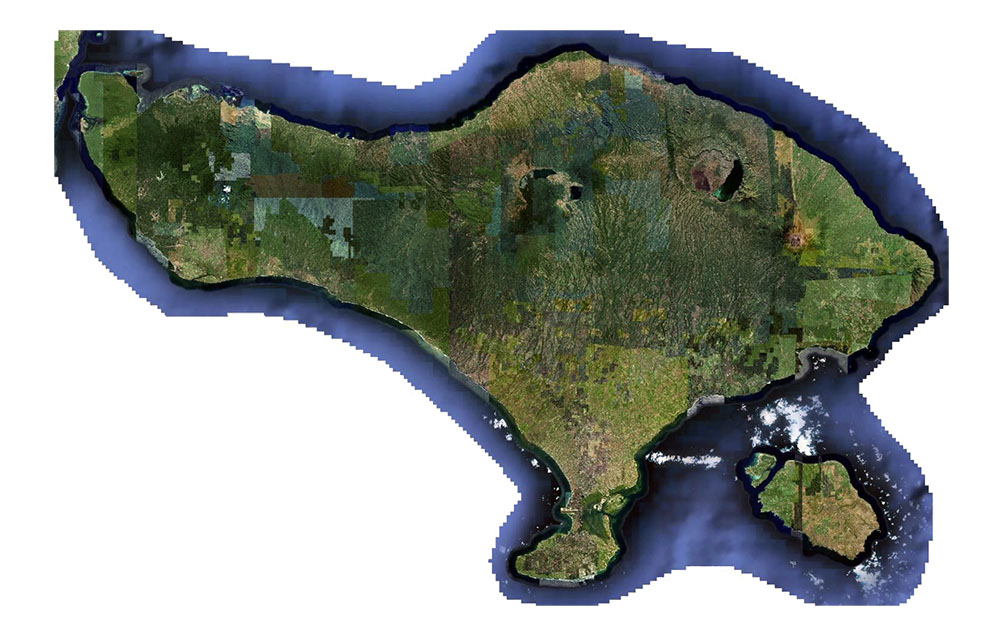PLAN B
PLAN B / when there is no plan A is a two part research project exploring the possibility of making Bali entirely autarkic.

INITIAL RESEARCH VIDEOS BY STUDENTS FROM XJTLU:
Agriculture
https://youtu.be/Z3fOqEQrI-o?si=tpCVCN4IMbBUv2sF
Transportation
https://www.youtube.com/watch?v=ecZUO23VW30&t=1s
Energy
https://www.youtube.com/watch?v=v5VZEujvKiY
Urbanisation
https://www.youtube.com/watch?v=4y5xPZFACOA
Water
https://www.youtube.com/watch?v=T2OVDzsRNO0
Waste
https://www.youtube.com/watch?v=CtV5g357dsE
Construction
https://www.youtube.com/watch?v=hl3UlOG5IIc
Land use
https://youtu.be/Ztx0okq5n9c?si=Mg49ZFTYXaRNjlIy
Ecology
https://youtu.be/qcckEfakoXM?si=5ko9sCi9wBc-xneR
PART 2
PDF ON land use bali
COLLATED MAPS
Background
This is the preliminary result of the Xian-Liverpool University’s BALI LAB, spearheaded by Dr Neville Mars. The project explores pathways towards resource independence of Bali island by 2045, or a “PLAN B”.BALI
Few places speak to the imagination as Bali Island in Indonesia. This tropical paradise of endless green and blue vistas is deeply rooted in the collective psyche of the global tourist. Famous for its undulated landscapes of rice paddies intertwined with jungles and waterfalls, Bali evokes a sense of primordial harmony: mankind living in balance with nature. Its intricate landscape, structured around its native irrigation system (Subak), is the product of the Balinese belief system that strives for cohesion between mankind, spirit and nature (Tri Hita Karana).
Historically settlements across the world had a clear codependence with their hinterland, and the food, fuel and materials produced within their catchment areas. In the age of the Anthropocene, however, the world has fundamentally disrupted the interdependencies between city and countryside and between people and planet. Global resource flows now connect to all major urban nodes. This means planning models, such as ‘zero carbon city’ or ‘circularity’ that rely on closed resource systems become impossible to simulate, let alone to implement. No city is autarkic, because no urban environment is an island.
What if Bali could be the first exception..
MISSION
As an island, Bali has a natural border. What flows in and out of the island can be strictly mapped and measured. Its small territory and narrow economic foundation of tourism and farming, offers a powerful imaginary; an alternative scenario that explores a truly circular future, decoupled from urban expansion and rampant consumption. The absence of heavy industry could allow Bali to feed and fuel itself sustainably, and be economically profitable and socially equitable, or in short, to realise John Elkington’s 1997 concept of a triple bottom line: “people-planet-profit”4.
Plan B presents Bali with a collective goal to localise and close all resource flows by 2045, realising the world’s first resource independent territory on the island of the Gods..
Plan B asks:
1. How can Bali become autarchic?2. What are the spatial implication of this transition towards 2045?
SECTORS
Strategies are developed for nine different sectors: water / energy / waste / agriculture / materials / ecology / land use / urbanity / infrastructure.
Ultimately, this sectoral approach should lay the foundation for cross-sectoral planning integration.
Owned by neville mars / Added by neville mars / 16.6 years ago / 67405 hits / 55 minutes view time
Tags
Latest Entries
Contribute
Login to post an entry to this node.
